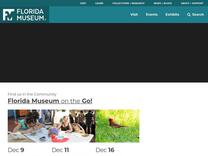Earth Week: Nature Journaling Challenge – For Educators https://www.floridamuseum.ufl.edu/educators/blogs/earth-week-nature-journaling-challenge/
In honor of Earth Week (you know, the week of Earth Day) and the beginnings of this blog, I’m celebrating each day with an activity that challenges me to get outside, think creatively, stretch my senses, and practice writing. So often in museum education, we get caught up in the logistics and
When you feel like you’re ready, give yourself 2-5 minutes to try your hand at

